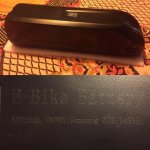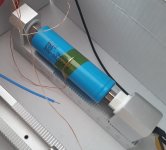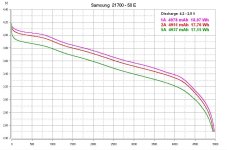thunderheart
100 W
Original article: https://www.thunderheartreviews.com/2019/01/samsung-50e-capacity-test-5000mah-or-not.html
Samsung INR21700-50E is a 21700 size cell which is being sold as 5000mAh one while in its official datasheet the capacity is mentioned as "Min. 4900mAh" and there is absolutely no "5000mAh" mention anywhere.
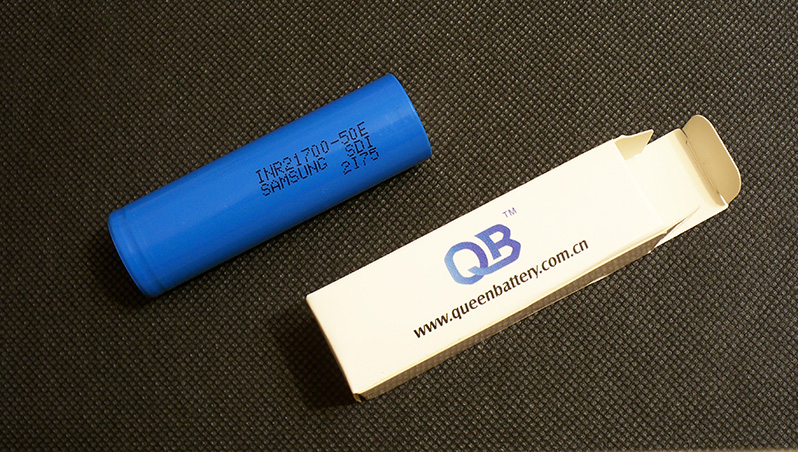
The battery was bought from my reliable supplier (Queen Battery) and tested with ZKETECH EBC-A20 and a self-made battery holder. It's a PC-connected battery tester supporting 4-wire measuring and discharging at up to 20A.

I've used version 3.0 of my battery holder based on 0.5mm thick pure copper terminals

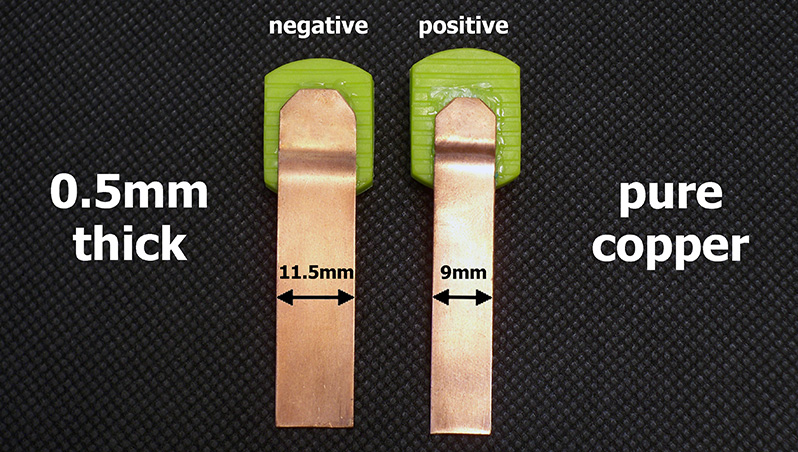
I've followed all the prescriptions of the IEC61960-2003 standard concerning battery's capacity measurement. Before each discharging cycle each battery was charged at standard charge current mentioned in its datasheet to charge end voltage. Before each discharging or charging i've held a 1-1.5hrs pause. The environment temperature was 23.0-24.5°C. To be sure in results i've done each test minimum twice (usually 3-4 times).
Samsung INR21700-50E
The cell is marked as INR21700-50E SAMSUNG SDI 2I75 which means that the production date is 05 Jul 2018.

The main specs from Samsung 50E datasheet:
Capacity (min): 4900mAh
Nominal voltage: 3.6V
Standard charge current: 2.45A (0.5C)
Charge cut-off current: 98mA (0.02C)
Max charge current: 4.9A (1C)
Charge end voltage: 4.2V
Max. continuous discharge current: 9.8A (2C)
Discharge cut-off voltage: 2.5V
AC impedance at 1KHz: ≤35mΩ
Max weight: 69g
Measured DC IR at 4.9A in fully charged condition was 26.5±0.5mΩ
Measured weight of the tested cell was 68.8g
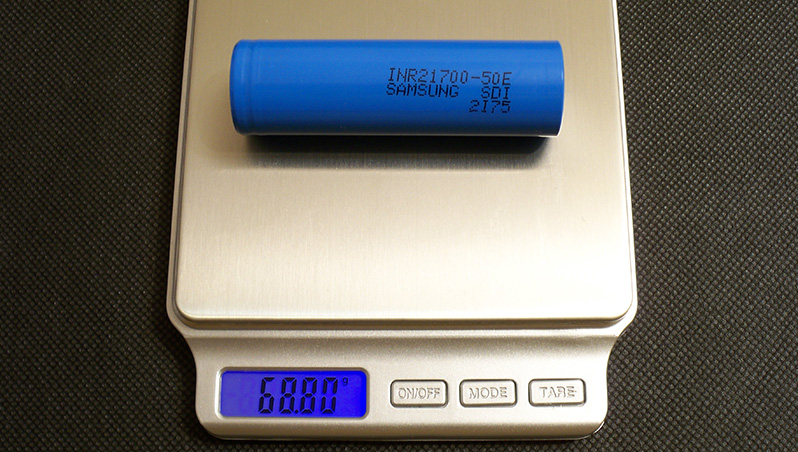
Capacity test results:
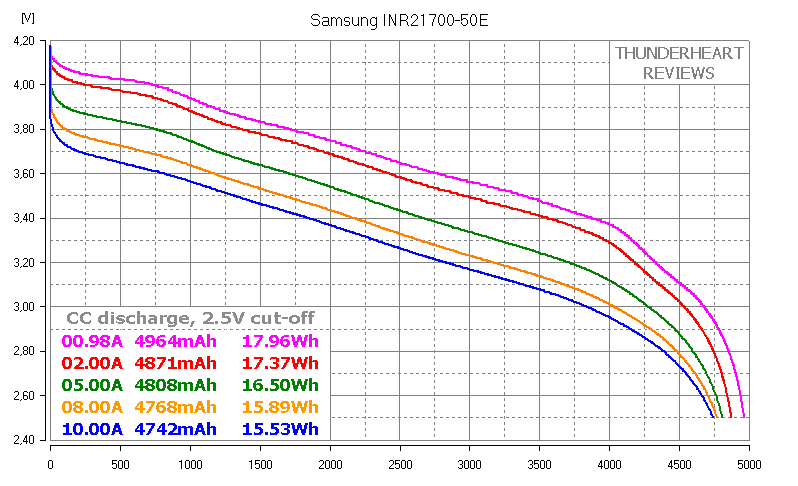
At 0.2C (0.98A) discharge 50E's capacity doesn't reach 5000mAh and is slightly higher than 4950mAh which makes me think that 50E must be classified as a 4900mAh cell rather than a 5000mAh one. All the curves look very nice and smooth. At 10A 50E's capacity is more than 4700mAh which is a good result for a 4900mAh cell.
50E is a slightly better cell compared to 48G but the difference is hardly noticeable but bear in mind that 48G's standard charge current is much lower than that of 50E - 1.44A vs 2.45A.
Here is the video version of this review:

Check out my YouTube channel for batteries, chargers and other stuff reviews.
I've launched my blog where you can find all my reviews in one place. Every new test/review will be first published on YouTube and in the blog. I'll be happy to see new subscribers, comments, suggestions and just your thoughts.
Samsung INR21700-50E is a 21700 size cell which is being sold as 5000mAh one while in its official datasheet the capacity is mentioned as "Min. 4900mAh" and there is absolutely no "5000mAh" mention anywhere.

The battery was bought from my reliable supplier (Queen Battery) and tested with ZKETECH EBC-A20 and a self-made battery holder. It's a PC-connected battery tester supporting 4-wire measuring and discharging at up to 20A.

I've used version 3.0 of my battery holder based on 0.5mm thick pure copper terminals


I've followed all the prescriptions of the IEC61960-2003 standard concerning battery's capacity measurement. Before each discharging cycle each battery was charged at standard charge current mentioned in its datasheet to charge end voltage. Before each discharging or charging i've held a 1-1.5hrs pause. The environment temperature was 23.0-24.5°C. To be sure in results i've done each test minimum twice (usually 3-4 times).
Samsung INR21700-50E
The cell is marked as INR21700-50E SAMSUNG SDI 2I75 which means that the production date is 05 Jul 2018.

The main specs from Samsung 50E datasheet:
Capacity (min): 4900mAh
Nominal voltage: 3.6V
Standard charge current: 2.45A (0.5C)
Charge cut-off current: 98mA (0.02C)
Max charge current: 4.9A (1C)
Charge end voltage: 4.2V
Max. continuous discharge current: 9.8A (2C)
Discharge cut-off voltage: 2.5V
AC impedance at 1KHz: ≤35mΩ
Max weight: 69g
Measured DC IR at 4.9A in fully charged condition was 26.5±0.5mΩ
Measured weight of the tested cell was 68.8g

Capacity test results:

At 0.2C (0.98A) discharge 50E's capacity doesn't reach 5000mAh and is slightly higher than 4950mAh which makes me think that 50E must be classified as a 4900mAh cell rather than a 5000mAh one. All the curves look very nice and smooth. At 10A 50E's capacity is more than 4700mAh which is a good result for a 4900mAh cell.
50E is a slightly better cell compared to 48G but the difference is hardly noticeable but bear in mind that 48G's standard charge current is much lower than that of 50E - 1.44A vs 2.45A.
Here is the video version of this review:

Check out my YouTube channel for batteries, chargers and other stuff reviews.
I've launched my blog where you can find all my reviews in one place. Every new test/review will be first published on YouTube and in the blog. I'll be happy to see new subscribers, comments, suggestions and just your thoughts.


